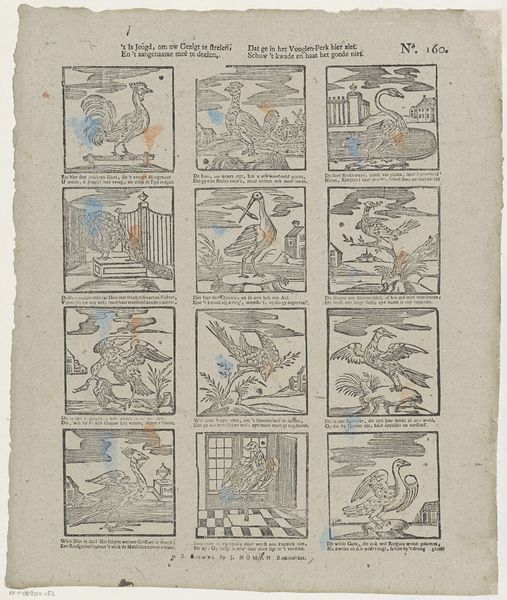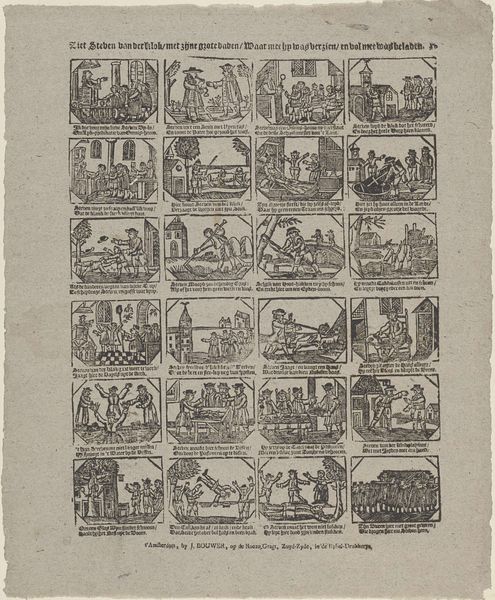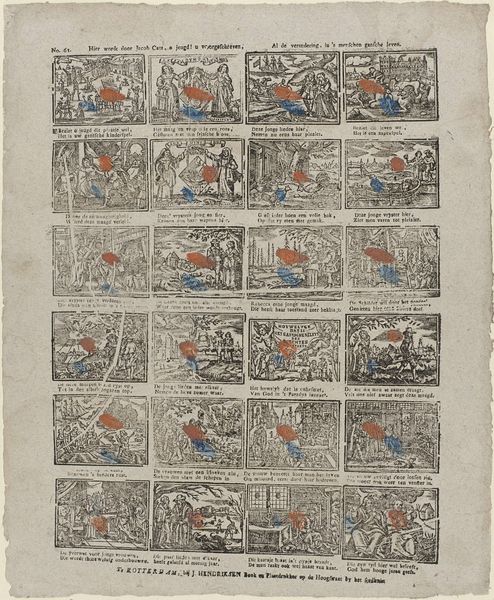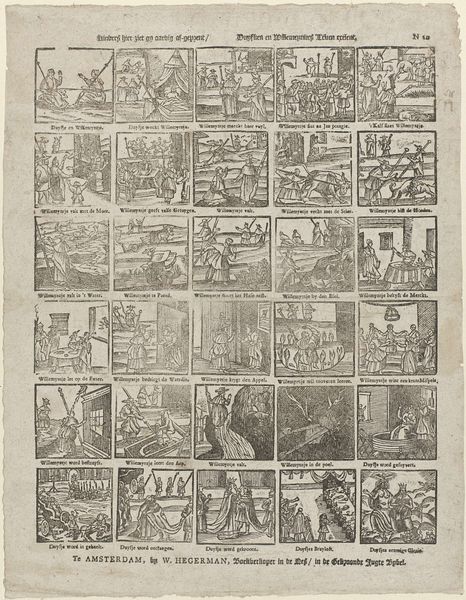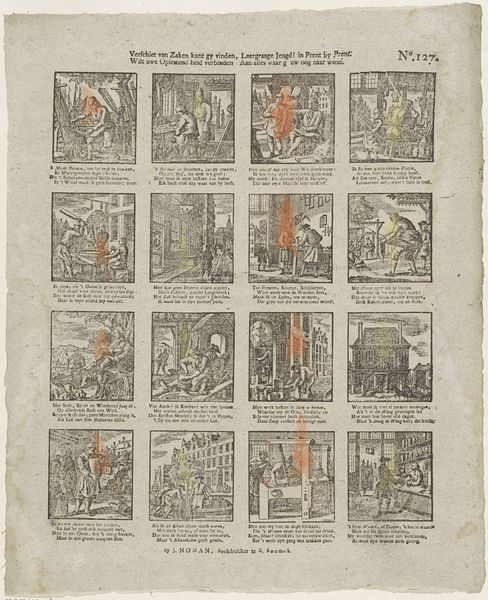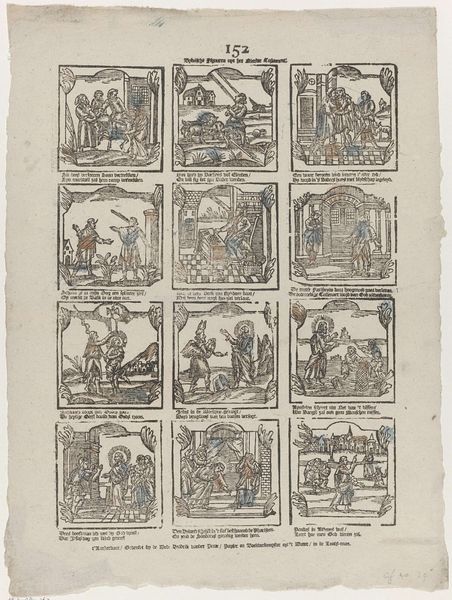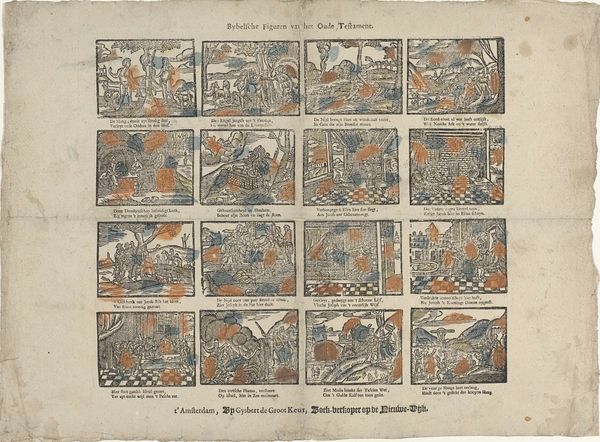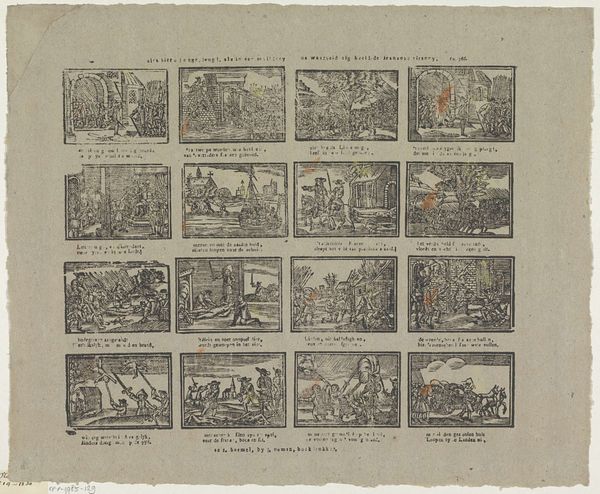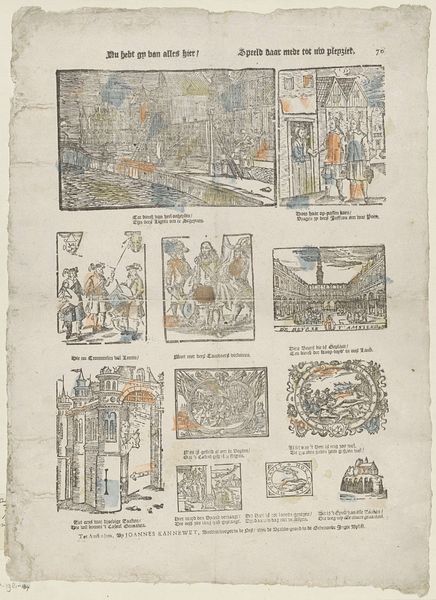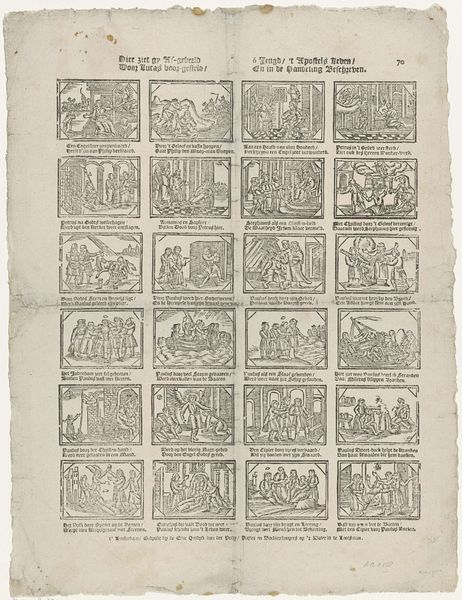
't Alderbest dat daar is op aard / Is te zijn met Godt gepaard 1725 - 1780
0:00
0:00
print, engraving
#
baroque
# print
#
engraving
Dimensions: height 415 mm, width 310 mm
Copyright: Rijks Museum: Open Domain
Editor: This print, "'t Alderbest dat daar is op aard / Is te zijn met Godt gepaard," created by Johannes Kannewet between 1725 and 1780, and held at the Rijksmuseum, presents several small, almost vignette-like scenes. I am immediately drawn to the seemingly personal or devotional tone. How might we interpret the intent behind these images, considering the religious context of the time? Curator: It’s crucial to read these images within the complex landscape of religious life during that period. These prints were not simply decorative, but functional; instruments of piety, reflecting a negotiation between established church doctrines and individual spiritual practices. Think about the Protestant Reformation’s impact, especially the shift toward individual interpretation of scripture and personal relationship with God. Editor: So, this isn't just art for art's sake; it's a tool for engaging with faith. Does the act of creating and possessing these images hold significance within social dynamics? Curator: Precisely. Consider the power dynamics at play. Who had access to these prints? How did their distribution networks reinforce or challenge existing social hierarchies? Perhaps some were made more widely available for women, enabling expressions that official religious avenues stifled. The text at the bottom mentions a bookshop, “in de Gekroonde Iugte Bybel." This would provide insight into this piece’s circulation. Editor: I hadn’t considered that. Looking at the image groupings, it suggests a considered assembly by the artist/printer. Curator: Exactly! How might understanding gender roles of the time inform our reading of them? What elements of popular belief become visible in this commercial format? Editor: That really broadens my view. I was looking at them as individual scenes, but now I see them as part of a bigger conversation about faith and society. Curator: And by considering their placement and reception, we might also unlock stories of individual agency and resistance, finding within these historical prints echoes of contemporary struggles for self-expression.
Comments
No comments
Be the first to comment and join the conversation on the ultimate creative platform.
